Jewish Ritual Murder
This is the full, original documentary Jewish Ritual Murder, banned from much of the Internet.
This is the full, original documentary Jewish Ritual Murder, banned from much of the Internet.
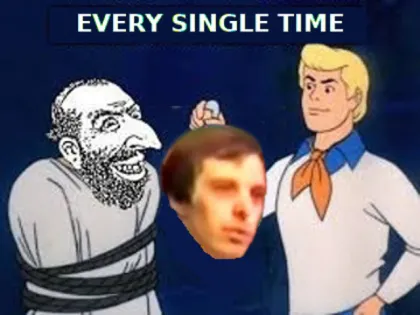
Addressing Charles Weisman’s What About the Seedline Doctrine? Part 7, Evil for Wicked or Good
Here we shall continue our address of chapter 3 of Charles Weisman’s book, which is simply titled “The Serpent”. As I had said before we began this endeavor in our last presentation, because this is probably the most important chapter in his book, we may present and address every single paragraph, so that none of our detractors can claim we purposely missed anything which they may then imagine that we cannot answer.
At the beginning of his chapter on “The Serpent”, we have already discussed most of the points made by Charles Weisman where he had presented a list of uses of the words satan and devil as they are found throughout the Scriptures. His biggest mistake, in my opinion, was his failure to distinguish between these words where they appear as simple nouns or adjectives or where they appear as a Substantive along with a definite article. The word diabolos is an adjective which can mean slanderer. But when it appears with a definite article it is used as a noun to describe a particular slanderer. Then where the definite article appears with a noun, it is referring to a known, particular instance of the given noun, rather than to just any instance. In other words, satan or a satan, without the definite article, describes anyone who at one point or another may be an adversary, but the satan, with the definite article, describes a particular and already known entity which is an adversary. Weisman exploited his examples of the use of these words by not explaining that difference. So thus far in his arguments in this chapter, Weisman has lied by omission.
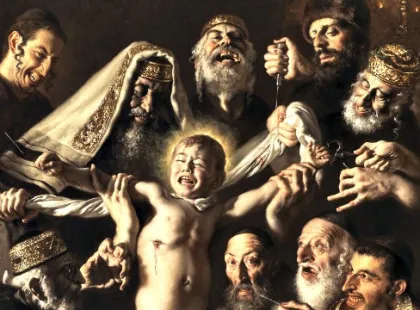
On the Gospel of John, Part 48: What is Finished?
In our last presentation describing The Jewish Murder of the Messiah of Israel, we left John’s account of the crucifixion of Yahshua Christ with the exclamation by Christ that “It is finished!” and the resulting explanation by John that “turning the head He surrendered the Spirit.” While many commentators speculate upon what Christ had meant where He said that “It is finished”, John himself tells us just before he described the exclamation where he wrote: “With this, Yahshua seeing that He had already finished all things, in order that the writing would be completed, He says: ‘I thirst!’ 29 A vessel full of vinegar sat there. Therefore they brought to His mouth a sponge full of vinegar wrapped in hyssop.”
So where Christ had said “it is finished”, John understood that to mean that all things which were written in the books of the prophets concerning what would happen to the Christ were fulfilled. Christ Himself had expressed that same thing the evening before, as it is recorded in Matthew chapter 26 where He spoke to His disciples at the time of His arrest, and particularly to Peter who had tried to prevent His arrest, and He said “54 But how then shall the scriptures be fulfilled, that thus it must be?” Then Matthew also wrote: “55 In that same hour said Jesus to the multitudes, Are ye come out as against a thief with swords and staves for to take me? I sat daily with you teaching in the temple, and ye laid no hold on me. 56 But all this was done, that the scriptures of the prophets might be fulfilled.”
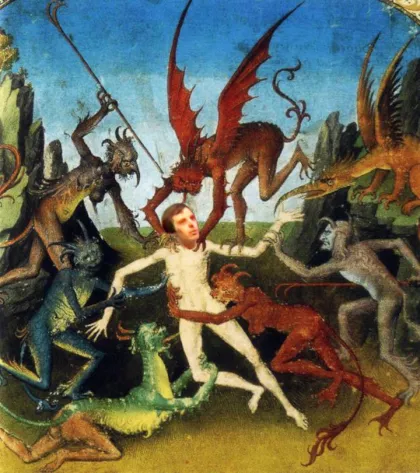
Addressing Charles Weisman’s What About the Seedline Doctrine? Part 6, Demons, Devils and Satyrs
Once again we had many extemporaneous comments and explanations, and not all of them made it into our notes.
In our last presentation we came to the end of chapter 2 of Weisman’s book, and saw in one of his arguments towards the end of his section subtitled “The Enmity” that Weisman agreed with us when he tried to explain it. He admitted that the serpent was an intelligent individual, a person, who had its own order in the world which was contrary to the order of God. Of course, this could not be true of a simple snake created on the 5th day of Genesis chapter 1. So Weisman admitted that the basis for our so-called Two-Seedline belief is true, while at the same time he continued to deny Two-Seedline.
Now we begin to shall address chapter 3 of Charles Weisman’s book, which is simply titled “The Serpent”. Here he offers a lot of conjecture and what we may consider to be straw man arguments, however some Two-Seedline teachers or pastors of the past did indeed hold at least some of the more absurd concepts which Weisman argues against. Once again, I believe we shall see that Weisman’s arguments have no merit once we explain the basis for what we believe. Because this is probably the most important chapter in his book, we may present and address every single paragraph, so that none of our detractors can claim we purposely missed anything which they may then imagine that we cannot answer.

On the Gospel of John, Part 47: The Jewish Murder of the Messiah of Israel
As we presented the first part of John chapter 19 and the account of the trial of Christ before Pontius Pilate, which we had titled Gods and Emperors, we also found a need to discuss at greater length the issue of culpability for the crucifixion of Christ. This is because there is much propaganda in presumably Christian literature which places the preponderance of guilt for the crucifixion of Christ on Pontius Pilate, or on the Romans in general, when Christ Himself, and His apostles after Him, had clearly placed that guilt on the Judaeans. So it is a wonder to us, that the Jewish propaganda which has forever attempted to shift the blame onto Pilate is so strong that now even so-called Christian scholars, or so-called scholars who claim to be Christians, no longer believe their Bibles or the veracity of the only surviving eye-witness accounts. Instead, they believe the lies of the Jews who with cunning and sophistry have imagined that they can escape the ultimate punishment which awaits them for their act of Deicide, as well as their continued acts of rebellion against that very same God whom they had slain, which they have perpetrated throughout history.
The phenomenon of Bolshevism was not new in 1917. It has erupted continually throughout history, and it is always instigated by the same people who today are known as Jews. The Bolshevik Revolution was not Russian, and the French Revolution was not French. The result of both was the oppression of Christianity and the attempt to introduce an atheistic utopia. While at least most of the Reformers were not Jews, the Jews of Europe certainly also had a significant role in assuring the success of the Reformation, and Martin Luther was allied with them until he recognized their treachery, after which he tried to warn the world, but by then it was too late and the world did not heed his warning.

Addressing Charles Weisman’s What About the Seedline Doctrine? Part 5, Decoding the Enmity
This is not to be construed as a complaint, but this refutation of the lies of Charles Weisman is taking much longer than I initially expected. However it must be done in detail if we are going to sufficiently demonstrate exactly why he is wrong, and precisely why his arguments were often dishonest. So while we thought we could finish Weisman’s discussion of the enmity of Genesis 3:15 in our last presentation, we did not. Hopefully with this presentation we can conclude that, and then finally move on to chapter 3 of his book, which is titled The Serpent.
We have already discussed much of Weisman’s argument concerning “the enmity”, and how he had used, or rather, abused, three passages of Scripture to somehow prove that the enmity between the serpent and the seed of the woman was ended at the Crucifixion. In this endeavor, Weisman cited two passages from Paul, which are Colossians 2:15 and Hebrews 2:14-15, and one passage from John, found at 1 John 3:8.
First, it can be established that Paul’s epistle to the Ephesians was written only a short time before his epistle to the Colossians, and that both were written during the two-year period while he was in captivity in Rome. This is explained in a paper at Christogenea titled Ordering and chronology of the epistles of Paul, and it is beyond the scope of our purpose to present it again here.

I really don’t like to discuss news or current events, but this evening I have a short program, so I will take a few minutes to discuss the latest media scare, coronavirus. The notes for this are found at the Christogenea Forum, where I am certain there will be further discussion.
The Time of the Heathen – a Critical Review of a sermon by Bertrand Comparet
While I admire and respect Bertrand Comparet as a trailblazer in developing and spreading the truth of our Christian Identity profession, I also believe that his message had a lot of flaws. But some of his errors were merely due to the time in which he lived, and if I had also lived then, doing what I do now, I may well have repeated them. This is because Comparet’s view of eschatology was a product of the Cold War, and apparently, he did not see any possibilities of an end-of-the-world scenario which may have transcended that age of apparent conflict.
But other flaws can evidently be attributed to the fact that his message was not fully developed, and for that reason it had some internal conflicts. For example, while Comparet recognized that there were goat nations and sheep nations, which were genetic races of people with contrary destinies, and of course he also knew that the identity of the sheep was with modern White Europeans, he sometimes also looked at goat nations as if they could somehow be allies of the sheep, and here he clearly makes that mistake.
So in the aftermath of our critique of Comparet’s sermon on the Sheep and the Goats, I thought to offer a critique of this sermon as well, and hopefully even some of our skeptics, who continue to cling to Comparet’s views in at least most areas, will themselves see the need for refinement and revision which we – meaning both Clifton Emahiser and myself – have been pressing for many years.
This is from a C-Span taping of something which they had titled "Combating Terrorism", but where Biden is speaking at least briefly about immigration.
So it should be no secret as to why the southern border has purposely been left wide open.
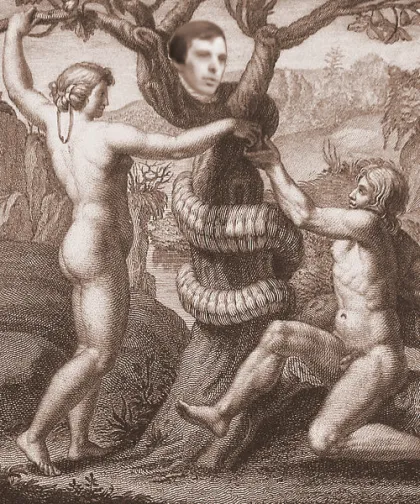
Addressing Charles Weisman’s What About the Seedline Doctrine? Part 4, Lies of Omission
As we said at the end of Part 3 of this series, in refuting Weisman’s lies, we have necessarily gotten ahead of him, so we will have to repeat ourselves later in our address of his book. For example, at the end of the book there is a section on Witchcraft, Gnostic and Masonic beliefs and the Talmud and Kabbalah. Weisman is thereby slandering our understanding of Scripture by associating it with all of those wicked writings, which is ad hominem rather than legitimate debate, and we addressed some of that in the beginning of the last presentation we made in this series.
Following that, we addressed Weisman’s contention that the “seed of the woman” in Genesis chapter 3 refers only to Christ Himself, which is not true, and we exposed the lies about Hebrew grammar which he created in his attempt to prove that it is true. We also addressed many of the citations he made from various denominational commentaries which make the same insistence, and we refuted them, but on the other hand, we pointed out how a few of them actually agreed with us, and not with Weisman – something which he evidently did not understand, or did not want to understand.
Then we demonstrated the folly of the statements made by Weisman and by some of the commentaries which he cited that claim that Satan was somehow eliminated at the Crucifixion, when it is quite clear in Scripture that Satan was still in the world 30 and 60 years after the Crucifixion, as it is professed in the epistles of the apostles and in the Revelation of Jesus Christ, and the apostles themselves described for us what Satan is, as Satan is still with us today. Apparently we shall discuss Satan much further on when we address part 3 of Weisman’s book, which is subtitled “The Serpent”.
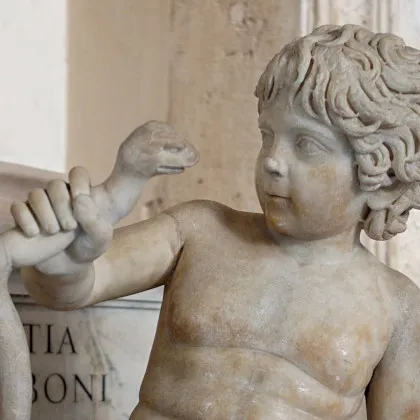
On the Gospel of John, Part 46: Crime and Culpability
As we presented our commentary on the opening verses of John chapter 19, we saw that the apostle clearly sought to describe Pontius Pilate in a way that absolved him of any complicity, minimizing his culpability in the murder of Christ. So the first charge by the Judaeans regarding Christ that would be a serious offense to Rome was that He had claimed to be king, which is not necessarily true although the gospels do record others as having made that claim on His behalf. Pontius Pilate, interrogating Christ about that charge, sought the truth of the matter and when Christ answered him with an inquiry of His Own, Pilate asked “Am I a Judaean?” That evidently indicated that he was admitting having known nothing of matters peculiar to the people of Judaea, as he then asked “Thine own nation and the chief priests have delivered thee unto me: what hast thou done?” So to answer Pilate’s first question, Christ did not deny or admit being a king, and only said that His kingdom was “not of this world” while professing that He came into the world only to speak the truth.
Although Christ did not deny the charges made by the Judaeans, Pilate was nevertheless reluctant to accept them, and sought to release Him. At this point a custom is mentioned which is difficult to verify because it is only mentioned here in the Gospel accounts, and not in any other surviving records. Pilate was described as having customarily released a prisoner on the feast as a favor to the Judaeans. While Josephus does not discuss anything like this custom in his histories, he does mention other instances of pardons which may have been granted by Roman procurators. So Pilate hoped that they would agree to release Christ, but they demanded Barabbas instead. Barabbas was a robber and a murderer, the leader of a sedition, and therefore he deserved to die. But looking at the name Barabbas from a prophetic point of view, since in Hebrew it apparently means son of the Father, in that manner it very well represents the fact that Christ had died in exchange for the sins of the sons of His Own Father.
Christogenea is reader supported. This month's support level is reflected in the graph below. See our Contact page for a mailing address and other ways to support Christogenea.
87%
Recent comments